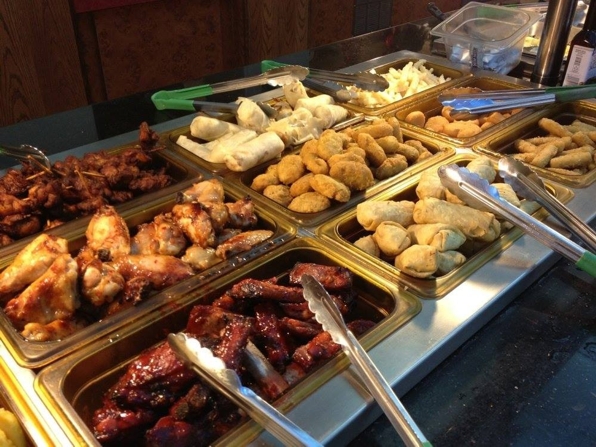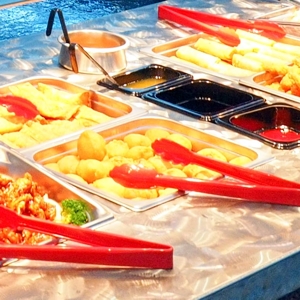We’ve all been out to Buffet Restaurants at least once. And, like me, you’ve probably had questions about how the food is prepared, stored and served. Rumours and mysteries abound. But I’ve stumbled upon a post by an Asian Buffet operator who tells all. And it’s not as scary as you might think…
 A classy Asian Buffet Hot Table. Almost to pretty to eat!
A classy Asian Buffet Hot Table. Almost to pretty to eat!
The Manager of a popular Asian Buffer came clean with customers and the curious alike in a recent Reddit ‘Ask Me Anything’ session…
Among the revelations – which to food service veterans are pretty much common knowledge – is that quite a bit of the Food is prepared in distant factories and shipped frozen to restaurants. That’s also why it is all very similar from restaurant to restaurant.
Microwave heating and cooking is not widely used, but all Chinese Buffets have a battery of Woks and deep fryers in the kitchen to get food ready for the table. They’re actually much faster.
Soups are made from commercially-available Soup Bases – Hot and Sour, Egg Drop, etc. – and are usually bolstered by the addition of appropriate leftovers from the previous service.
Last night’s White Rice may become the first tray of today’s Fried Rice.
Anything with Mushrooms or Seafood in it is trashed at the end of the shift for health reasons.
All sauces come into the resto in plain white plastic Gallon Jugs.
Nothing is, or can ever be guaranteed MSG-Free.
How the Hell do you make any money?
It’s all a matter of high volume. Like any other industry, Buffet Restos can save upfront by buying large amounts of foods all at once. That’s tricky with fresh foods, but the volumes can be managed to avoid excessive waste. Think of a frozen Asian delicacy you’d like in your freezer. Then, think that the restos can probably get the same thing (different package, different brand, maybe) for no more than 2/3 of the price you pay at the supermarket. Maybe half the price.And remember that frozen foods have extremely long shelf lives. A ‘zero waste’ policy can be adopted there.
Buffet restos also enjoy relatively low staff costs. They can have just three or four servers on the floor over a given lunch sitting that sees more than 1,000 diners serve themselves. At $20 a head, that’s a pretty good take for the resto at a minimum of cost and trouble to the operator.
But you’ve got to keep that volume up. We’re talking the difference between the profit on a hundred units (say, Dessert Squares) and a thousand. If the profit per unit is just a few cents, that’s still significant multiplied by the larger number of servings…
Oh, yes… The Health code…
All Buffet Restos are compelled to meet local health code standards for Food storage, handling and service. Buffets are no exception. In fact, they’re commonly given closer inspection by health inspectors than regular sit-down and Fast Food joints because the food is pout on display, coming into contact potentially with hundreds of diners and left to cool too long in some cases. By and large, Buffet Operators with big investments in their large dining rooms and kitchens take great car in ensuring their establishments meet or surpass. the regulations!
We’ll be back on the Asian Beat when he Lunar New Year rolls around – very soon now!
~ Maggie J.

